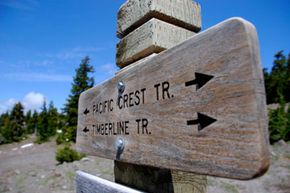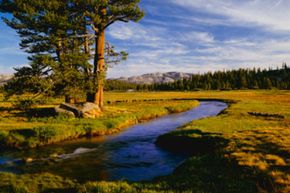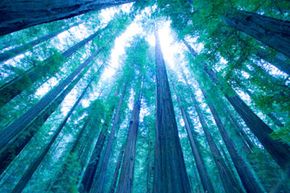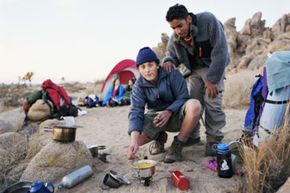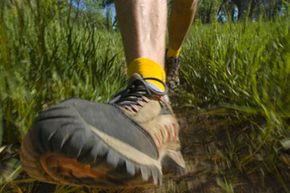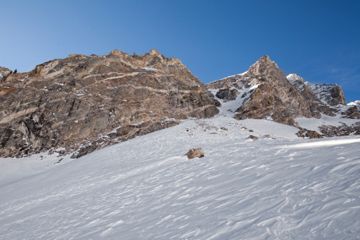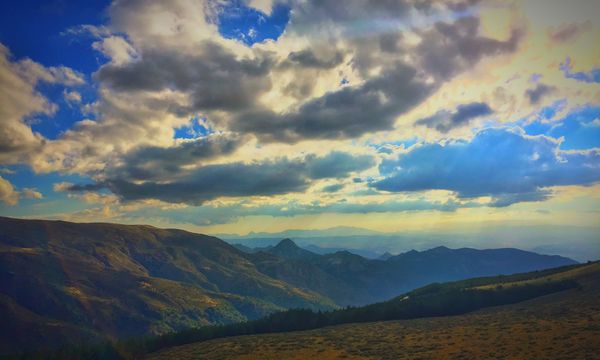Climbing Mount Everest is a feat so enormous, so dangerous, so daunting, that few people consider it, much less actually do it. Yet more people have scaled Mount Everest, the world's tallest mountain, than thru-hiked America's Pacific Crest Trail [source: Pacific Crest Trail]. How can that possibly be? Because the Pacific Crest Trail (PCT), quite simply, is a beast. The trail stretches 2,650 miles (4,265 kilometers) from Mexico to Canada along the crests of the Sierra and Cascade mountain ranges, passing through six of North America's seven ecozones en route. As it zigs and zags through California, Oregon and Washington, it climbs nearly 60 major mountain passes, traverses three national monuments and seven national parks and crosses the San Andreas Fault three times [sources: Pacific Crest Trail, Pacific Crest Trail]. Hikers can be parched in desert terrain one day, then using ice axes to stop a treacherous fall the next. Thru-hiking the PCT -- hiking it in one season -- generally takes five to six months [source: Pacific Crest Trail]. Climbing Everest? Just several weeks [source: Alpine Ascents].
The PCT route was first explored in the 1930s, with trail pioneers Clinton Clarke and Warren Rogers subsequently petitioning the federal government to establish one continuous trail. Unfortunately, all that resulted were several unconnected paths in each state. After Congress authorized the National Trails System in 1968, the Pacific Crest and Appalachian Trails were designated the first two scenic trails in the system, and in 1993 the Pacific Crest Trail was formally dedicated [source: Pacific Crest Trail]. Although the PCT is considered completed, a few of its sections still run along the road. The plan is to secure a trail corridor for those sections so that eventually the PCT is totally off-road [source: USDA Forest Service].
Advertisement
The PCT is strictly for hikers or equestrians (no bicycles or mechanized vehicles are allowed), and you can traverse the trail for an hour or two, or several days, weeks or months. Access is easy from major cities such as San Diego, Los Angeles, San Francisco, Sacramento, Portland and Seattle [source: Pacific Crest Trail]. Each year about 300 people attempt to thru-hike the trail, with about 60 percent of those succeeding. A smaller number try to thru-ride the PCT on horseback, but only a handful of people have ever succeeded. Thru-hikers and riders normally move from south to north, starting in May and ending around September. This is easiest because of issues with heat, snow and rain [source: Pacific Crest Trail].
The PCT is divided into five sections based on location and terrain: Southern California, Central California, Northern California, Oregon and Washington.
Advertisement
